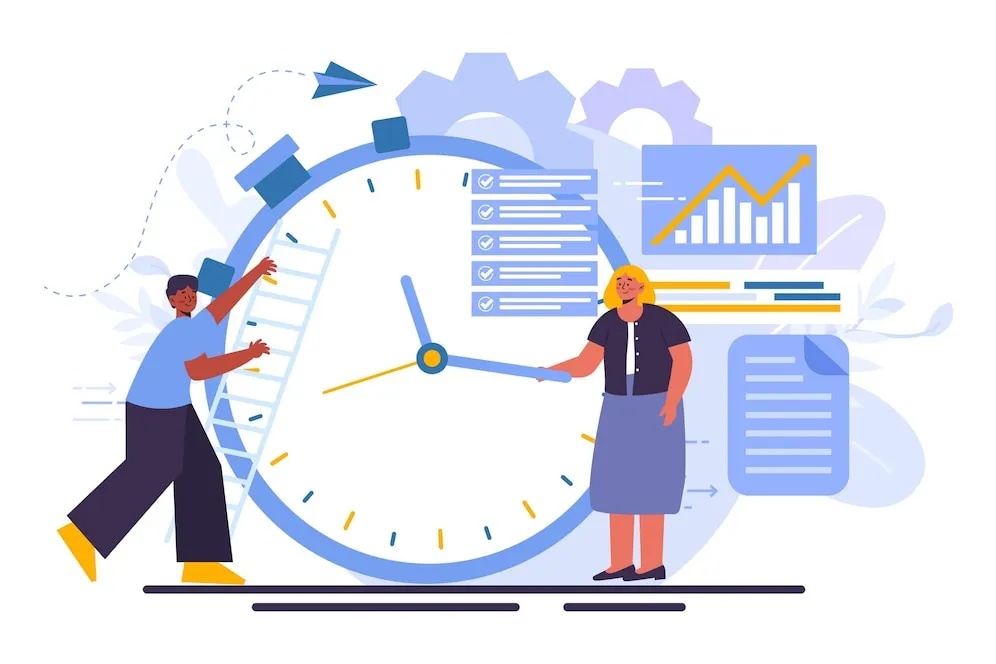
In today’s fast-paced work environment, productivity and efficiency are key, and tracking employee time has become an integral part of how businesses operate. With the rise of remote work and distributed teams, many organizations rely on employee time tracking apps to monitor performance, manage payroll, and ensure project timelines are on track. However, despite their popularity, many time tracking software solutions come with inherent flaws that can hinder rather than help.
In this article, we’ll explore the top five reasons why most time tracking software fails to deliver and what you should consider when choosing an effective employee time tracking app for your team.
- Inaccurate or Manipulatable Tracking
One of the most common problems with time tracking software is that it can be easily manipulated. Many apps rely on employees to start and stop timers manually, which leaves room for errors and misuse. Whether intentional or accidental, inaccurate tracking can lead to skewed data that negatively impacts payroll, project management, and performance reviews.
The Problem
- Human Error: Employees may forget to clock in or out, leading to inaccurate records.
- Intentional Manipulation: Some employees might exploit manual systems to log time they haven’t actually worked, causing productivity and payroll discrepancies.
The Solution
Opt for an employee time tracking app that automates the process, using features like GPS tracking, automatic start/stop functions, or keyboard and mouse activity monitoring. Automation minimizes human error and reduces the risk of data manipulation.
- Invasion of Privacy Concerns
Employee time tracking apps are often viewed with skepticism due to privacy concerns. Some tracking solutions monitor everything from an employee's keystrokes to their web browsing history, making employees feel watched, stressed, and distrusted. This invasive approach can lower morale and damage the workplace culture.
The Problem
- Over-Surveillance: Excessive monitoring can make employees feel micromanaged, leading to decreased job satisfaction.
- Legal Risks: Tracking software that collects too much personal data could put companies at risk of violating privacy laws or regulations.
The Solution
The best employee time tracking apps balance productivity monitoring with employee privacy. Look for software that offers transparency and allows employees to view what’s being tracked. Clear communication about why monitoring is in place and how the data will be used can also ease privacy concerns and foster trust.
- Lack of Customization Options
Every organization has unique time tracking needs, but many software options offer a one-size-fits-all approach. This lack of customization can make it difficult for businesses to adapt the software to their specific workflows, leading to inefficiency and frustration.
The Problem
- Inflexible Settings: Inability to customize features like reporting, time categories, or project management integrations.
- Generic Solutions: Features that don’t align with industry-specific requirements can create more work for managers and employees.
The Solution
Choose an employee time tracking app that allows you to tailor features to your needs. This includes setting custom rules for breaks, creating project-specific time logs, and integrating with other tools like payroll or project management software. Customizable dashboards and reporting options can make a significant difference in usability and effectiveness.
- Complex and Unintuitive User Interfaces
An effective time tracking solution should simplify work processes, not complicate them. Unfortunately, many time tracking software options have complex and confusing user interfaces that frustrate employees and reduce adoption rates. If it takes too long to learn how to use the software, productivity will suffer.
The Problem
- Steep Learning Curve: Employees may waste time trying to understand how to use the app, leading to frustration and mistakes.
- Decreased Productivity: Complex systemscan interrupt workflows instead of streamlining them.
The Solution
Prioritize a user-friendly employee time tracking app with an intuitive design and easy navigation. Features like simple timers, a clean dashboard, and mobile accessibility are key. A good app should be easy to set up, require minimal training, and integrate smoothly with existing workflows.
- Limited or Poor Reporting Capabilities
Data is only useful if it’s presented clearly and can drive meaningful insights. Many time tracking apps fail to provide detailed, easily digestible reports. Without robust reporting capabilities, managers struggle to analyze productivity trends, allocate resources effectively, or identify areas for improvement.
The Problem
- Incomplete Data: Some software only offers basic tracking data, without insights into how time is being spent across tasks or projects.
- Cumbersome Reports: Difficult-to-interpret reports can make it hard to glean valuable information, reducing the effectiveness of the software.
The Solution
Invest in an employee time tracking app that provides comprehensive and customizable reporting. The software should enable managers to generate detailed reports on productivity, project timelines, and labor costs. Advanced analytics, like identifying peak productivity times or analyzing project efficiency, can be especially beneficial for strategic decision-making.
Conclusion
While time tracking software is essential for today’s dynamic work environment, it’s crucial to choose the right solution that addresses the common flaws mentioned above. An ideal employee time tracking app should automate tracking, respect employee privacy, be customizable, offer an intuitive user experience, and provide insightful reporting. By carefully evaluating your options and understanding the limitations of common time tracking solutions, you can select the best app to truly enhance productivity and efficiency.
The goal is to empower employees and managers with accurate data that informs better decision-making, not to create an atmosphere of micromanagement or distrust. By finding the right balance and leveraging technology wisely, your organization can maximize the benefits of time tracking while minimizing its drawbacks.